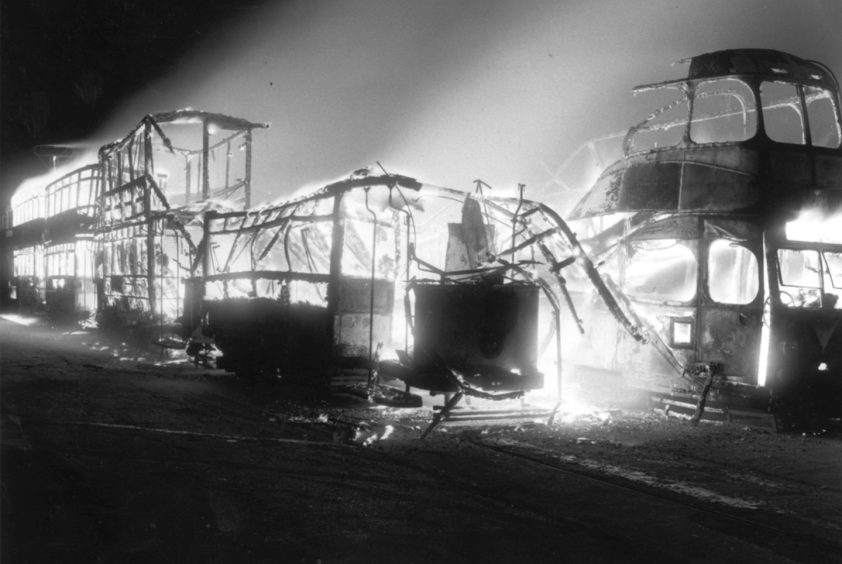
The infamous burning of Aberdeen’s trams was condemned at the time by Aberdonians, and has since been described as an act of fiscal vandalism, and an affront to our city’s transport heritage.
The tramway network in Aberdeen was increasingly expensive to run, it was thought buses were the future and would save money.
Rising electricity costs saw power amount to 16% of the council’s expenditure.
Therefore the decision to scrap the trams, made at a full city council meeting on the afternoon of February 7 1955, was seen as a logical one.
What might not be considered logical was how our forefathers, decided to rid themselves of the Granite City’s beloved trams…
The biggest decision in Aberdeen transport since scrapping horsepower
We begin our story with the council decision to finally ditch the trams in favour of buses.
Councillors were told “rising costs with rising fares left no room for sentiment” when deciding whether to keep the trams or not.
The council’s transport committee had already recommended the removal of the tramways in favour of an all-bus system.
But members at the full council meeting had no doubt as to the history-changing proposition before them.
Councillor Sinclair Hay, transport convener, told his colleagues it was “the most important decision taken on transport since our predecessors decided to scrap the old horse trams and substitute the then-modern system of electric traction”.
He explained how “a gradual closing” down would see the remaining trams disappear one route at a time.
First to go would be Woodside later that year, then Sea Beach-Hazlehead and finally the cross-town Bridges route.
In his statement, Councillor Hay said he noted that “many people doubtless had a nostalgic feeling for the old tram”.
But the councillors were unanimous in approving the ‘scrap-the-tram scheme’.
Residents predicted transport chaos without trams… were they right?
When news of the future withdrawal of the Woodside tram was made public, many people were up in arms.
Margaret Kerr of Sandilands Drive warned the city centre would be “chaos” without its trams.
She added: “It’s not trams that cause congestion, it’s the other vehicles.”
The Woodside route linking the city centre to the suburbs ended on November 26 1955.
Thousands turned out on St Nicholas Street and at the Scatterburn end of the run to say farewell to No. 108 on its final journey.
By now the rails had already been lifted on the withdrawn route in Rosemount.
But immediately Rosemount residents were writing to the Evening Express letters page lamenting their loss.
One said: “The trams were a superior service to these buses and the majority of Rosemount people also think so.”
Routes withdrawn one by one
The following October, the Sea Beach-Hazlehead-Woodend route was quietly withdrawn to no fanfare.
A small news in brief in the Evening Express announced the last tram would depart from Castle Street to the Hazlehead terminus at 11.30pm.
The tram limped on for a few more weeks to Woodend, before it too was withdrawn on November 17 with buses scheduled to take over the following day.
But the Bridges (Dee-Don) route wasn’t going to go quietly in 1958.
In March, Aberdeen Corporation Transport listed their entire stock of 42 tramcars for sale ahead of their withdrawal in May.
There were 21 double-bogie trams, which operated on the Bridges route, and 21 of the older type known as rigid truck tramcars.
Some of the trams had only been brought to Aberdeen in 1949 and were considered modern.
Pssst! Want to buy a tramcar?
Corporation Transport manager Frederick Frazer said: “I’m afraid they will all go as scrap.
“They are out of date and no-one wants them for anything else.”
Aberdeen had already been scrapping its trams one by one since the first routes were disposed of in 1954.
Unfortunately no other city wanted them – in early 1958, Glasgow too decided to get rid of its trams.
And Blackpool, the only English location that still had trams, had more than enough.
With little luck in shifting the stock for heritage purposes or otherwise, on April 24, nine days before the last tram would run, the council’s links and parks committee approved the burning of the trams.
By a majority vote, the councillors agreed to a request from the purchaser of the last 40 trams to burn them on private track at Queens Links.
Why can’t trams become summerhouses?
But the idea wasn’t met with a particularly warm welcome among Aberdonians, who fired questions at councillors during a public meeting at Rosemount School just four days before the burning.
They asked why the council would want to burn 40 tramcars, 20 of which had cost the city £25,000 only nine years previously.
Why, they wondered, could they not be transformed into summer houses, shelters or sent to the country as luxurious hen houses?
But Councillor Mitchell explained they had been put up for sale, “but local people had not accepted the challenge”.
Instead the 40 trams had been sold to a scrappie in Stratford, London, for £5000.
He stressed it was this firm, not the council, who wanted to burn the tramcars.
Horses Tib and Bloom were to lead procession
When May came, the Evening Express described the trams as “landmarks of a bygone era”.
It reported on plans for a final grand procession on May 3 with a horsedrawn tram, and said future generations “not yet born” would look back on photos of the occasion.
Already it seemed obvious how Aberdonians felt about losing their tramways.
What was meant to be a discreet and quiet dress rehearsal on Fountainhall Road the night before saw scores of people rush to their doorways leaving meals half-eaten to see the spectacle.
They grabbed cameras and watched as horses Tib and Bloom clip-clopped past their doors.
At the procession proper, led by the horsedrawn tram, two or more trams available to the public would follow and behind that there would be another for invited guests.
Taking up the rear was “POSITIVELY THE LAST TRAM CAR in Aberdeen” (reported in capital letters), which would carry Lord Provost Stephen and the other members of the council who had condemned the trams to their fiery fate.
Cheers, tears and stunned silence as trams made final journey
The procession left Bridge of Dee at 8pm and made its final journey up Holburn Street, where the museum-piece horse drawn tram took up the lead at Holburn Junction.
Special tickets were issued branded “Last tram, 3rd May, 1958” and a souvenir booklet giving an illustrated history of the city’s transport was issued to passengers.
Aberdonians lined the route, forming a guard of honour miles long as the city’s beloved trams clattered into the history books.
It was a warm May evening and literally thousands of spectators of all ages turned out for the sad occasion.
There were cheers, tears and pockets of stunned silence on Union Street as crowds eight to 10 people deep jostled on the pavements to say goodbye.
The council dignitaries alighted at the Town House and the trams continued their death march to the King Street depot where they would await their fate.
Viking funeral was fate of Aberdeen’s trams
In the early hours of May 12, more than 20 trams were set alight in what was dubbed “a Viking funeral”.
The trams were rolled along to the reserved track section at Queen’s Links between Constitution Street and the Sea Beach terminus.
As night fell, the crowds who had watched the funeral procession through Aberdeen returned for the cremation.
A well publicised event, barriers were erected for the expected audience.
Men doused the city’s “old faithful servants” with petrol, and within minutes of being set alight, the fire tore through the tramcars.
The cream and green corporation paint bubbled in the heat, and the wood and metal began to twist and fall apart.
There was sadness as sparks from the bonfire disappeared into the night sky.
‘Better to get scrapping over quickly’
The next day, scrappies got to work cutting up the charred and tangled remains of the trams which had been consumed in a hungry inferno.
Spectators watched on, former conductors expressed their sorrow, and a group of schoolboys sent by their teacher sketched the scene.
Walter Bird, director of the firm which bought the trams to burn, said: “This way we can get it over quickly, which is better for the people who have a soft spot for them.”
His company was responsible for scrapping the trams in Birmingham, Sunderland, Dundee, and was set to destroy 1500 London trolley cars.
And that night the rest of the trams were burned in another pyre at the beach.
Seventeen cars made their final trip to the seaside – 15 trams and two salt cars.
They were driven to Castle Street and towed the rest of the way, as there were no longer overhead wires to take them any further.
‘Buses not progress’, claimed residents
The tram carcasses were barely cold before people were complaining about the new bus service.
One Balgownie resident said the changeover from trams to buses caused no end of inconvenience with cuts in the frequency of services.
She added: “The substitution of a 12-minute bus service for a three-minute tram service is certainly not progress.”
People were vocal in condemning the decision to scrap the trams, which the council said were too expensive to run.
Some said poor decision making and better fiscal management could have saved the network.
However, the deed was done, and the city was coming out of mourning and coming to terms with the monumental changes in its transport.
People turned up to ‘secret’ burning in their pyjamas
But two days later, something was afoot at the beach under cover of darkness.
No announcement had been made this time, but a final batch of trams had been hauled there.
It was described as a “secret” burning, but word spread quickly.
Keen to glimpse the very last of Aberdeen’s trams, “people from round about flocked to the scene in their pyjamas, with overcoats on top”.
The Evening Express reported on “the flash of press cameras, the whirr of newsreel cameras, and the click of amateurs’ box cameras” as people tried to capture a dying part of the city’s history.
The last passenger was said to be Evening Express reporter Jack Webster, who leapt from the conductor’s platform as his car headed towards the fire.
Before their very eyes, 18 final trams went up in smoke.
What remains of the Aberdeen trams today?
Nowadays, hardly a trace of our once-loved tram system remains, beyond the occasional discovery of tramlines being uncovered during roadworks, and the crumbling tramway remnants at the Beach Boulevard.
The only way to get a true glimpse of this lost history in person is visiting the only Aberdeen tram not to be burned at the beach, the horse-drawn tram kept safe and sound at the Grampian Transport Museum in Alford.
ALL IMAGES IN THIS ARTICLE ARE COPYRIGHT OF DC THOMSON. UNAUTHORISED REPRODUCTION IS NOT PERMITTED.
If you enjoyed this, you might like:

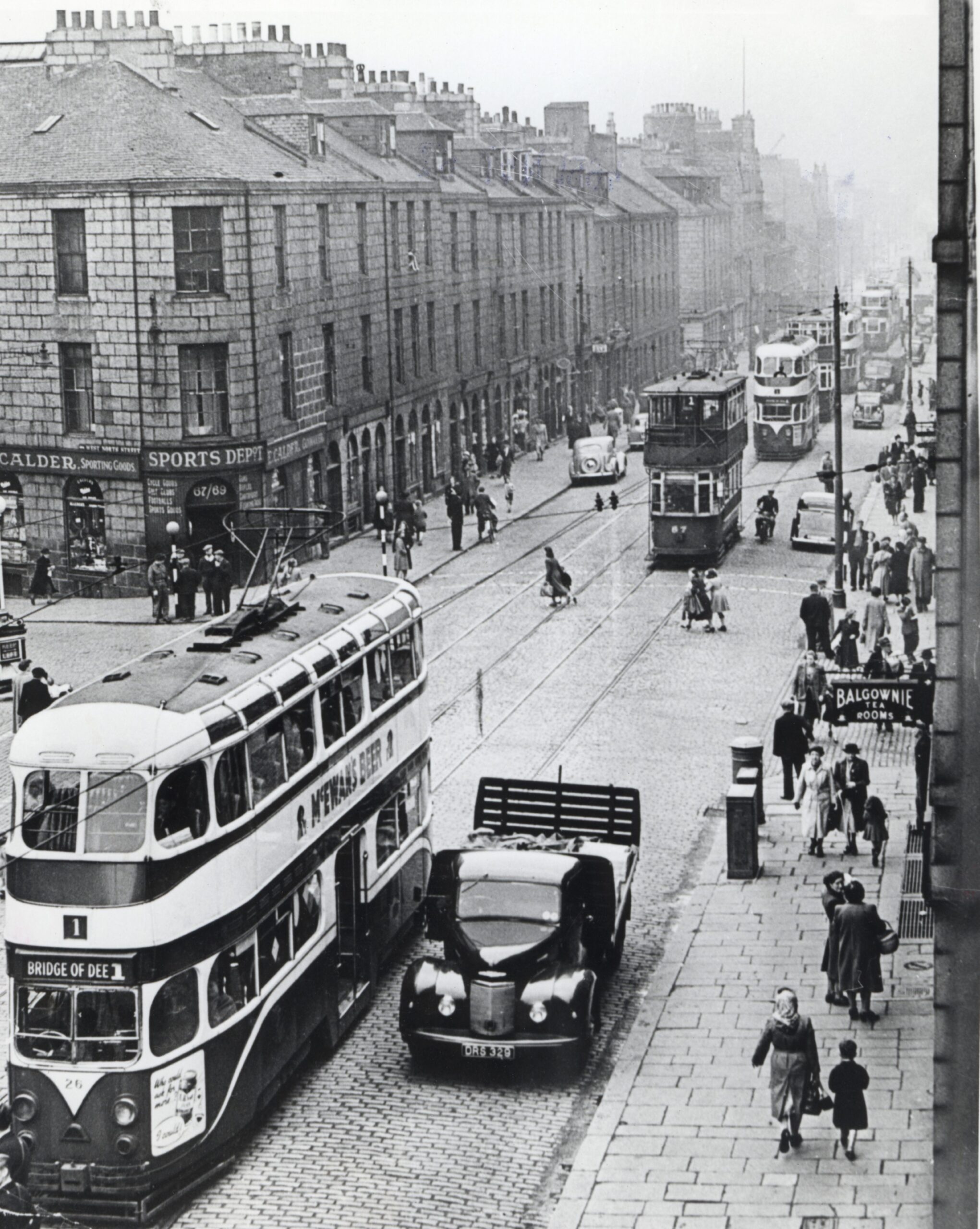
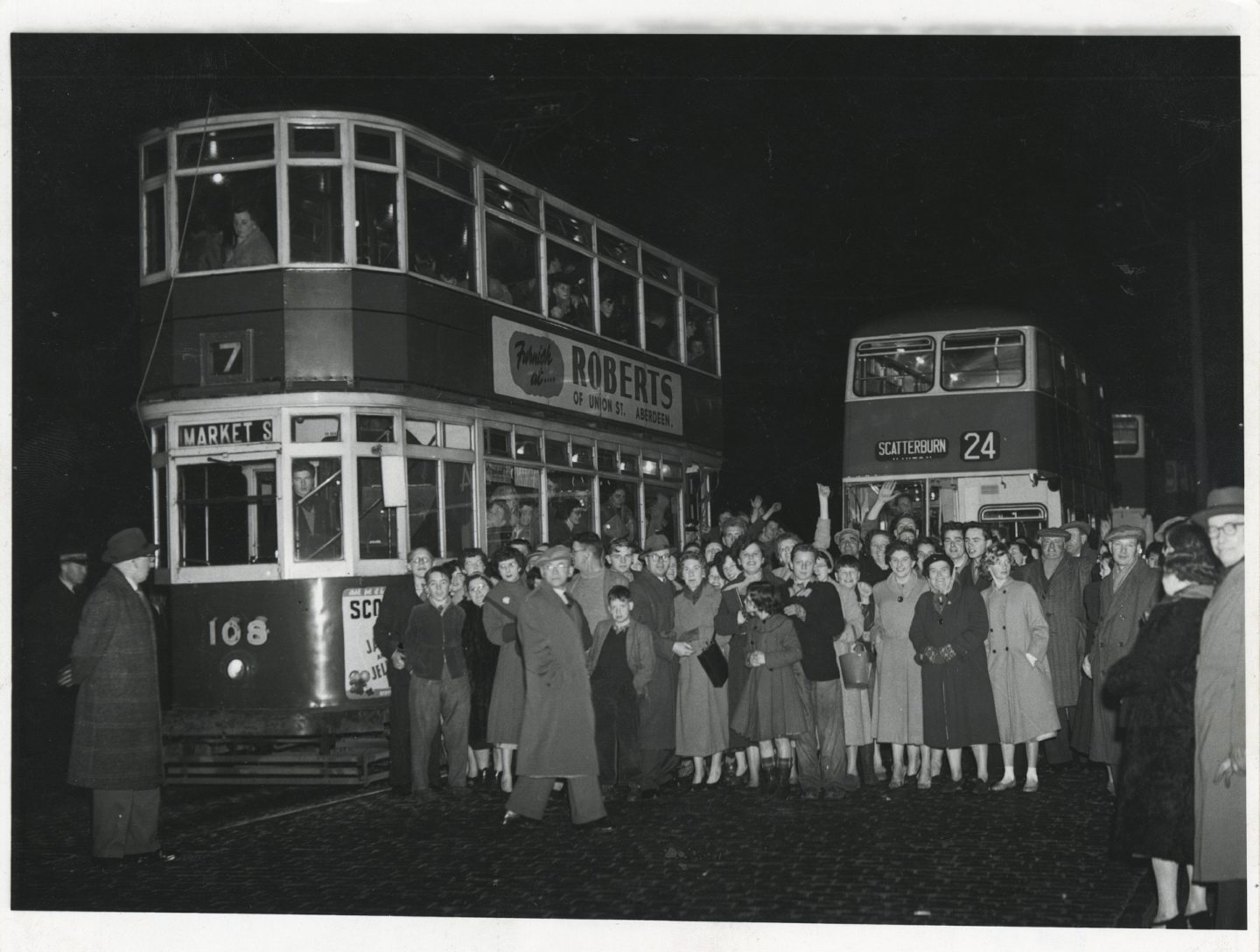
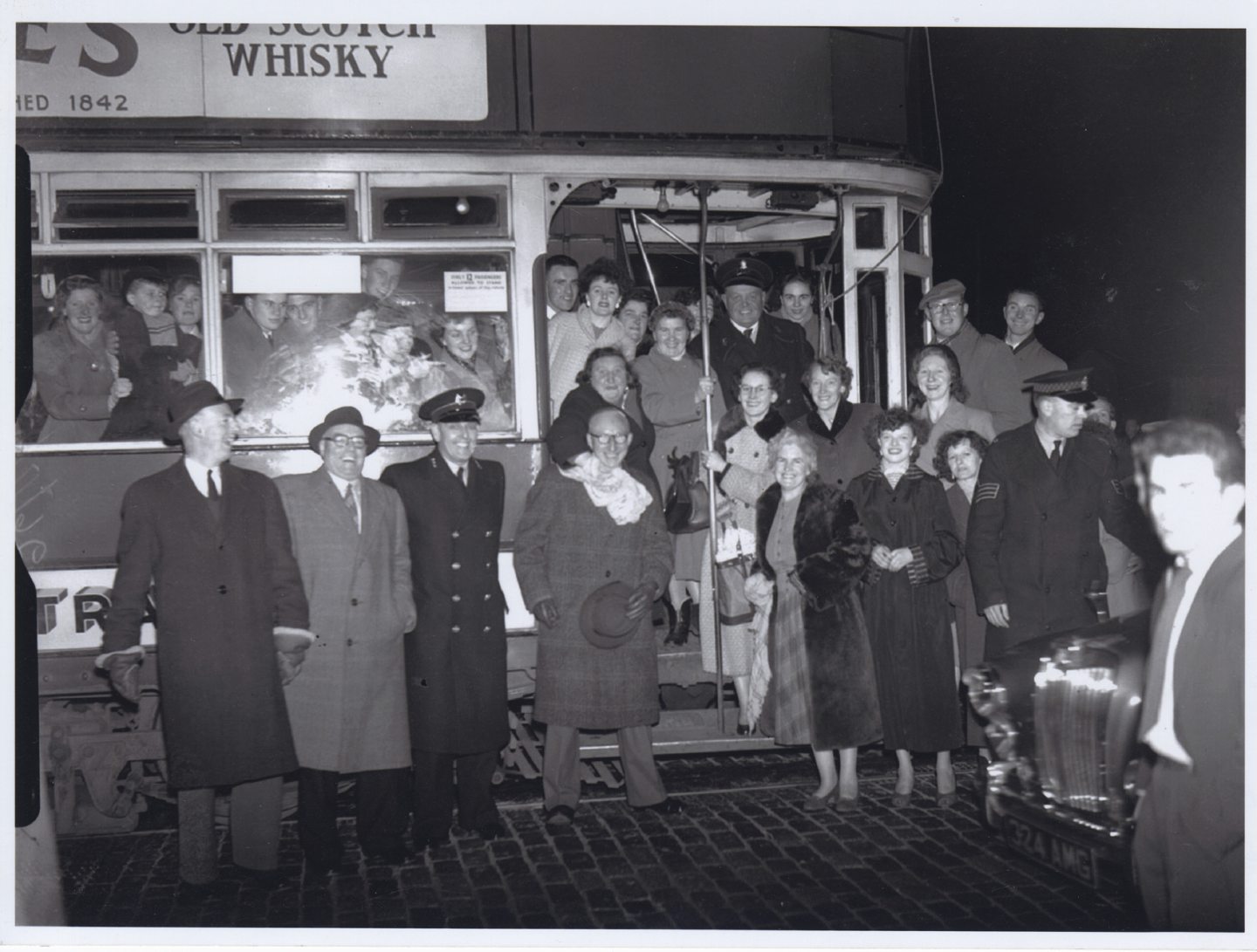
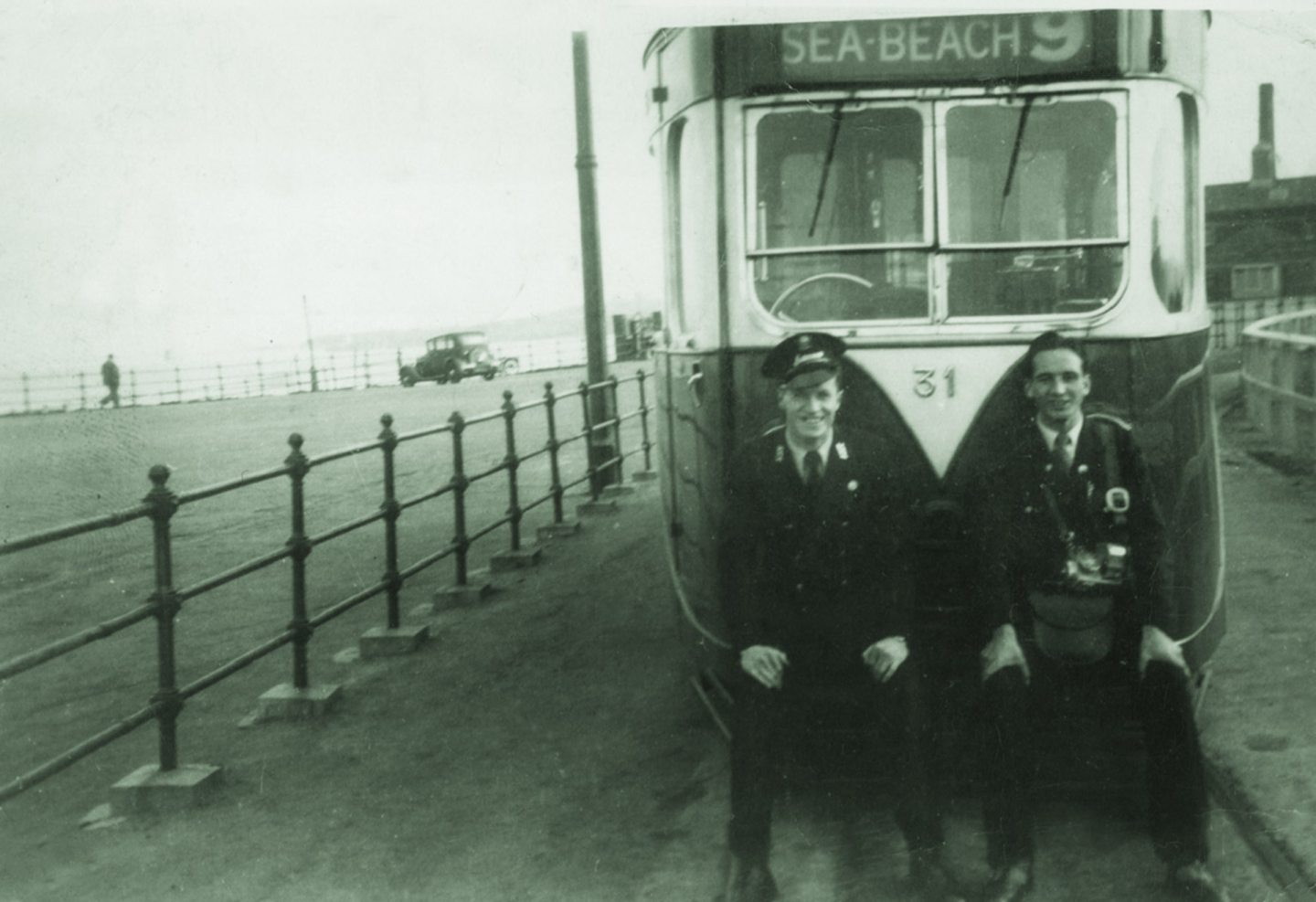
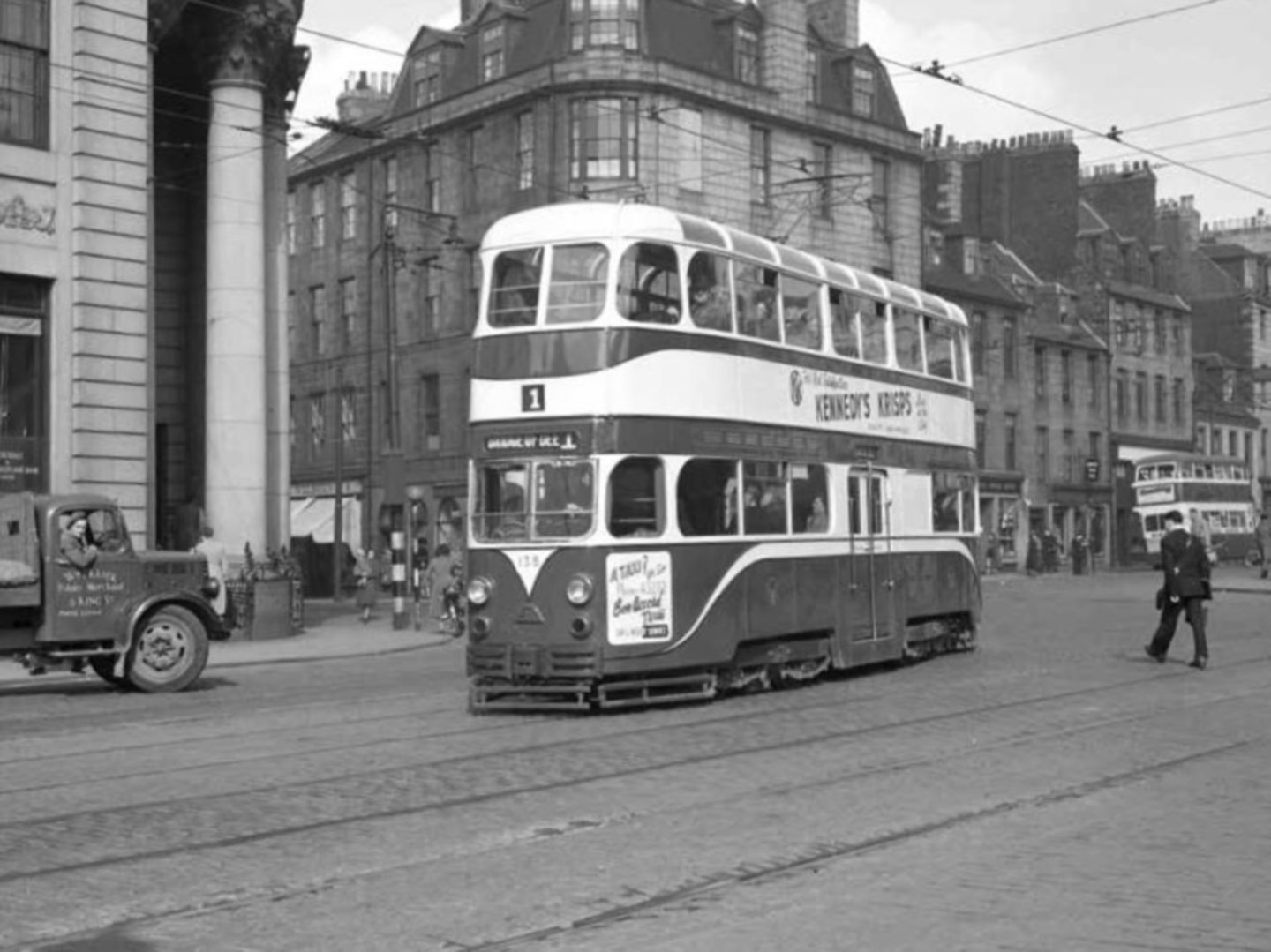
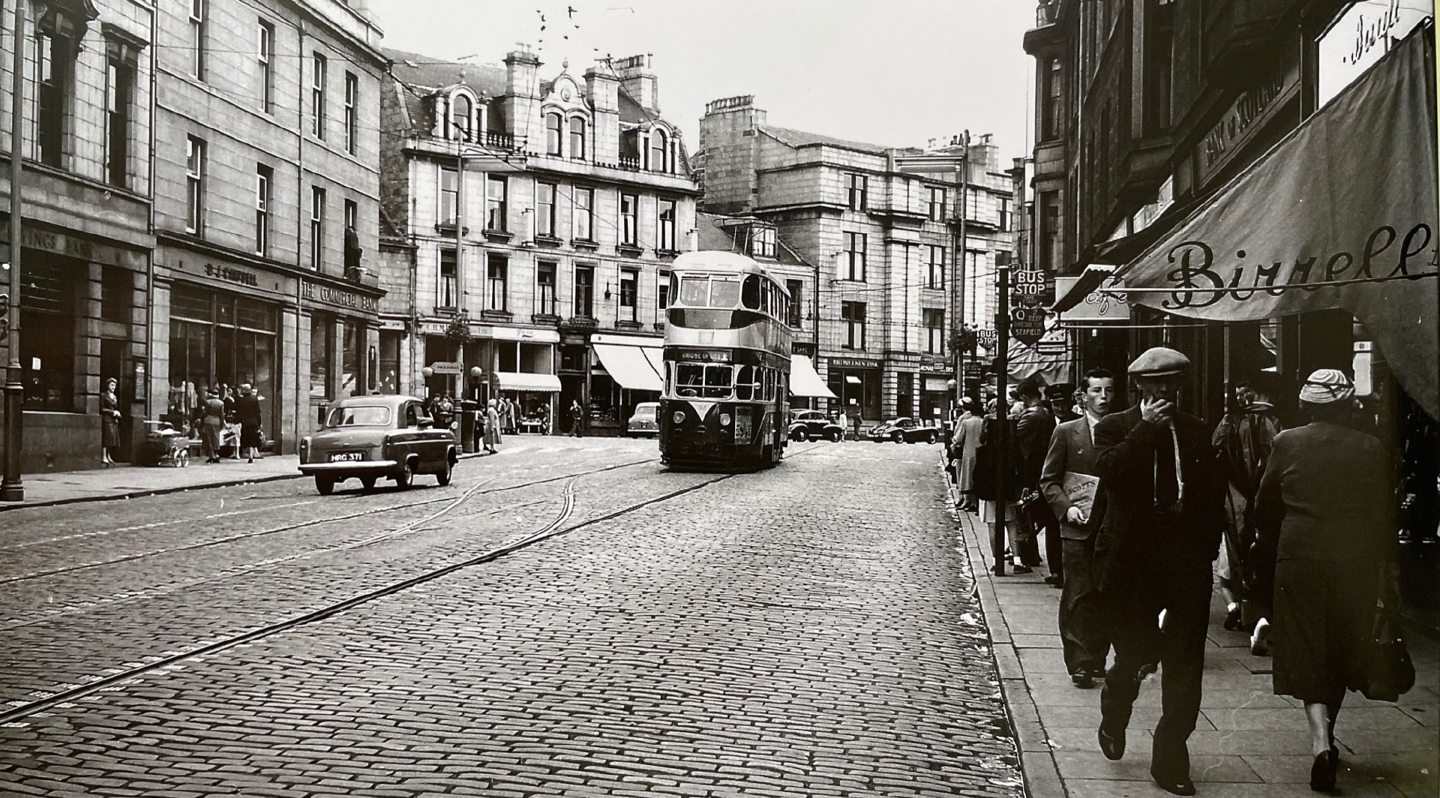
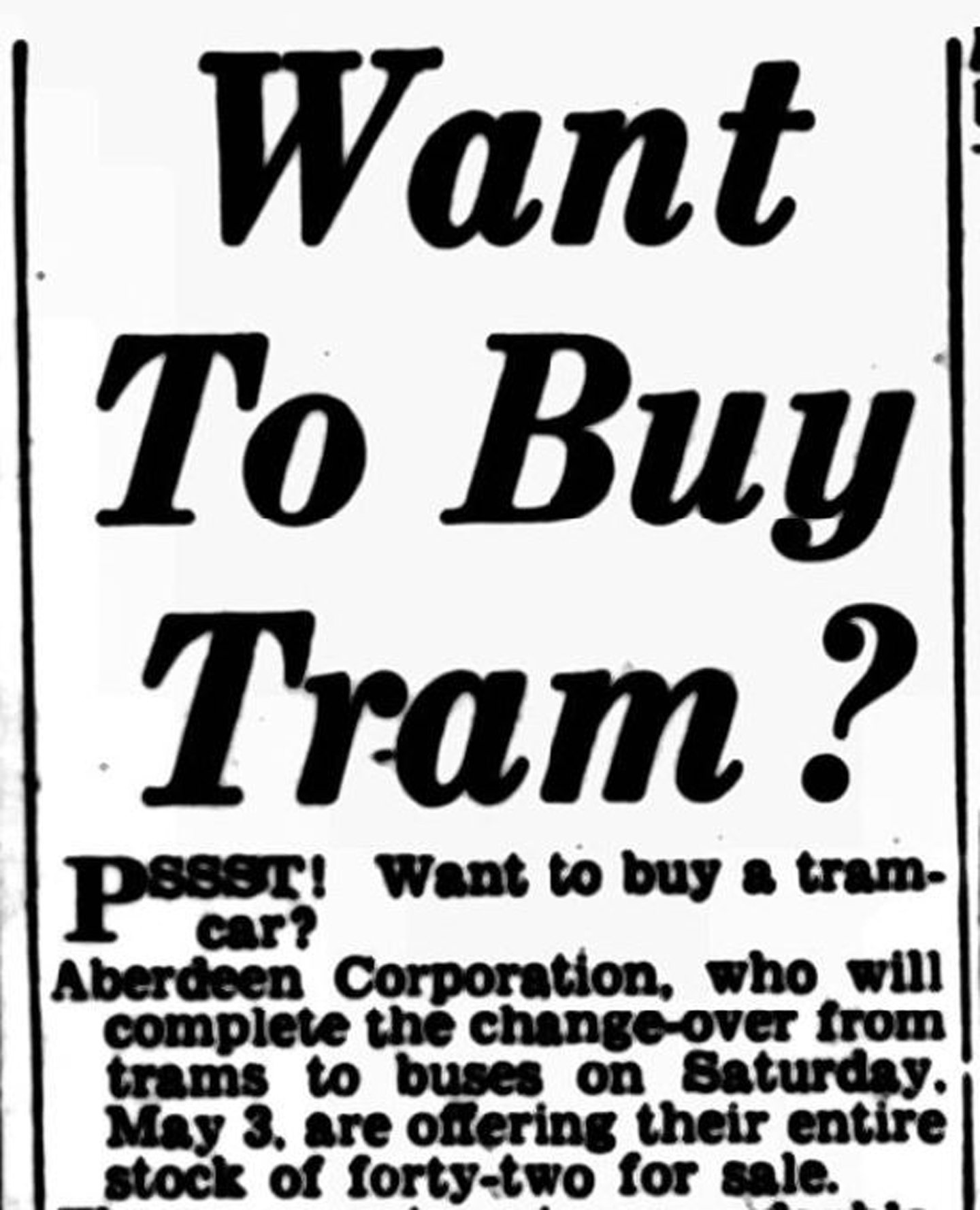
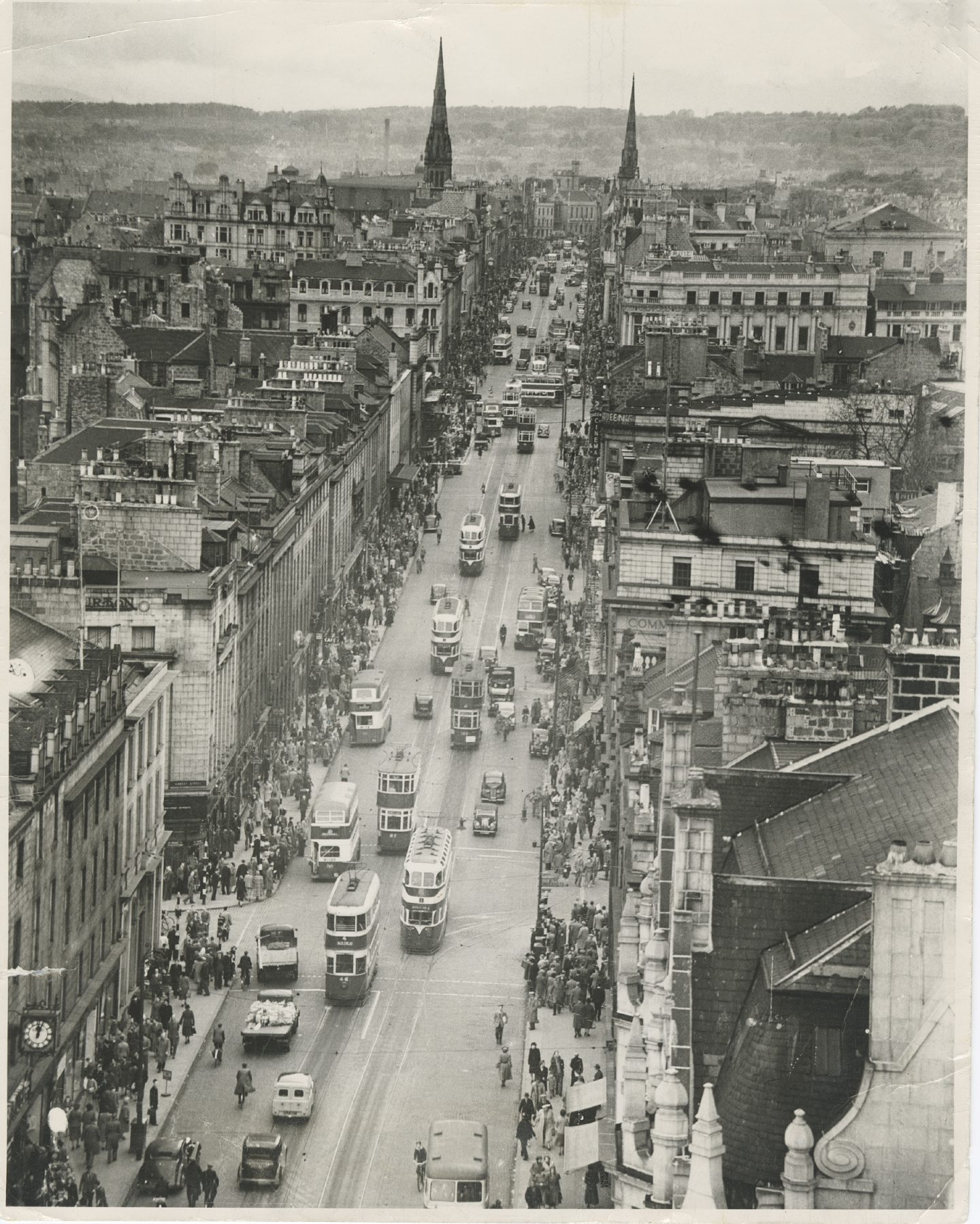
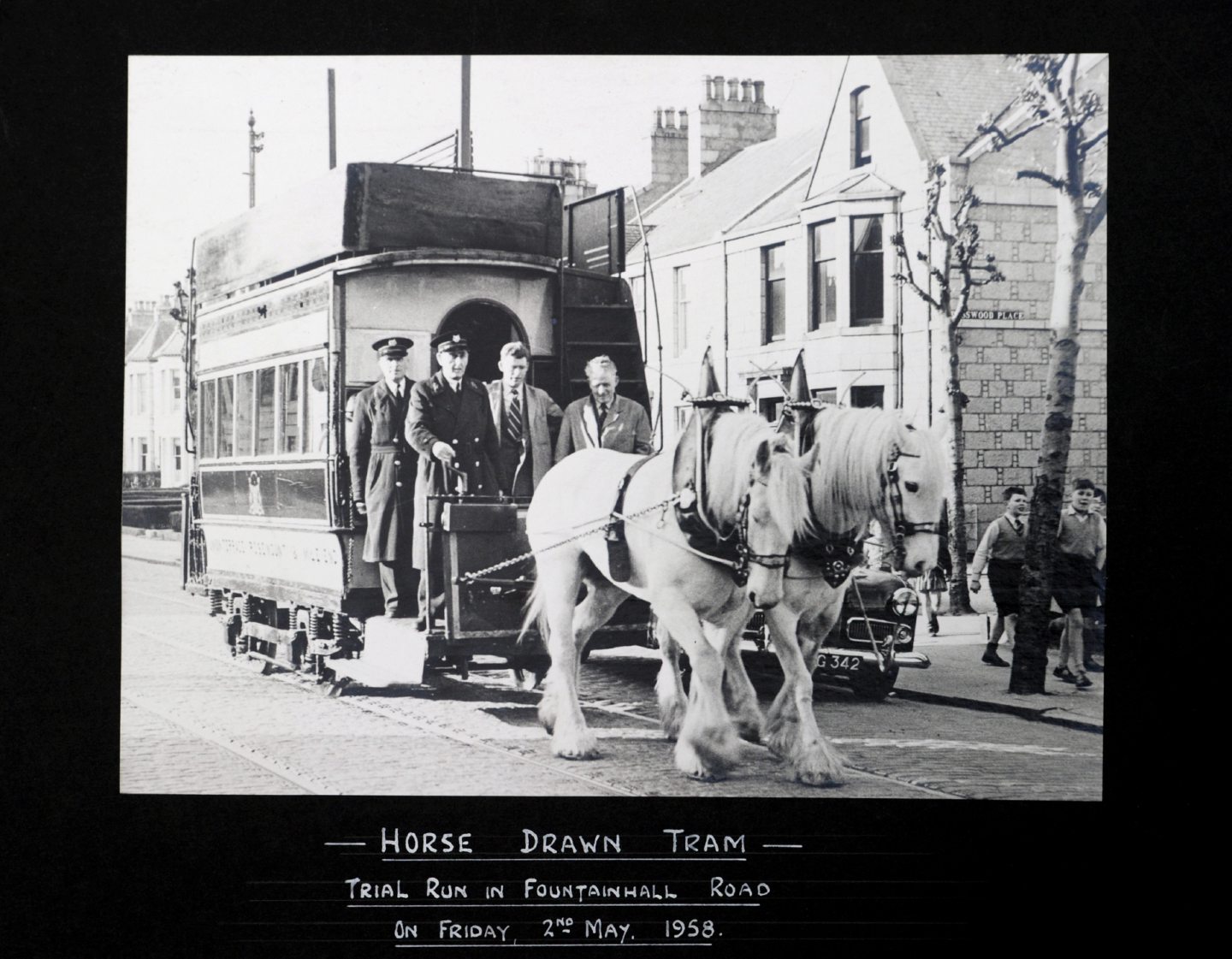
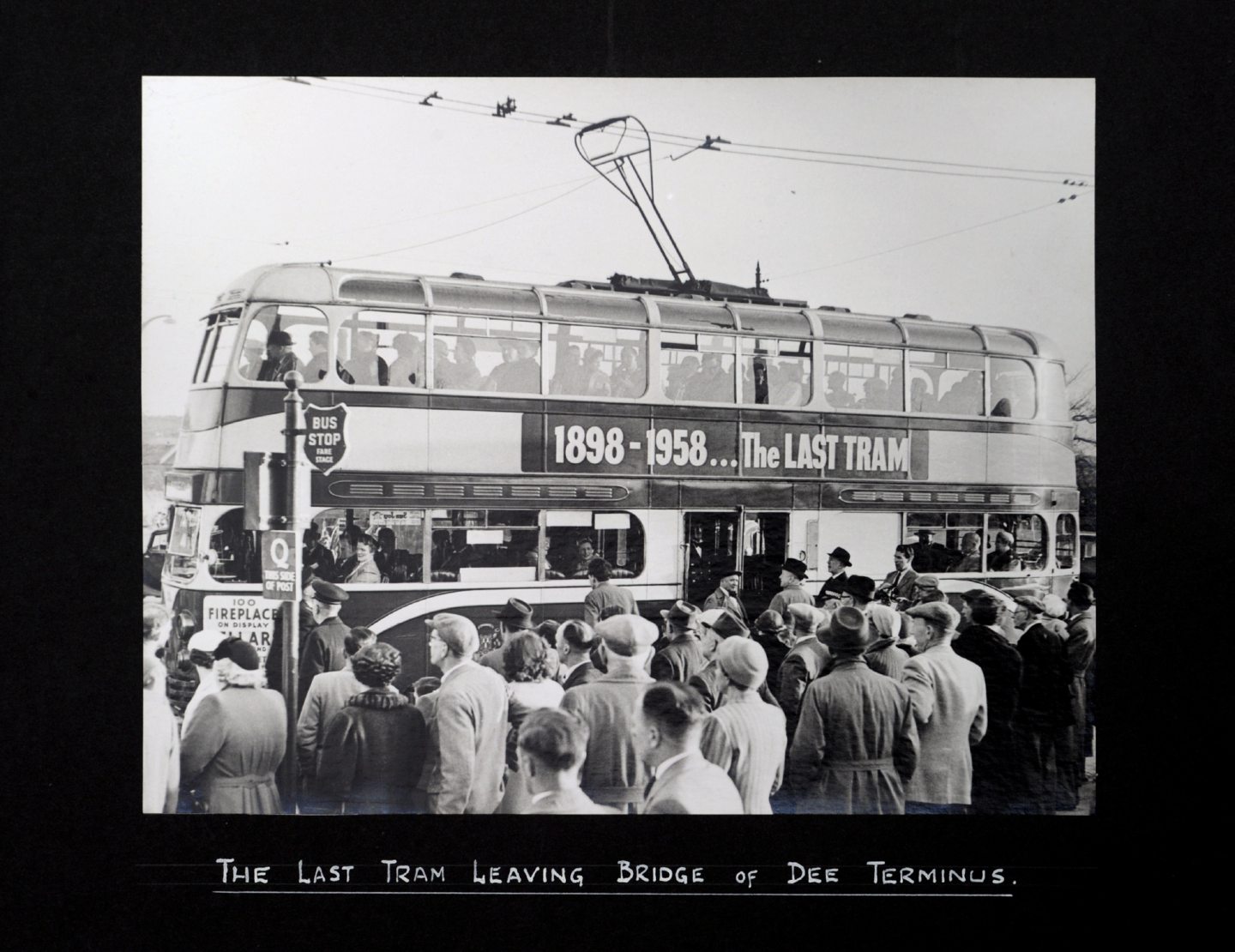
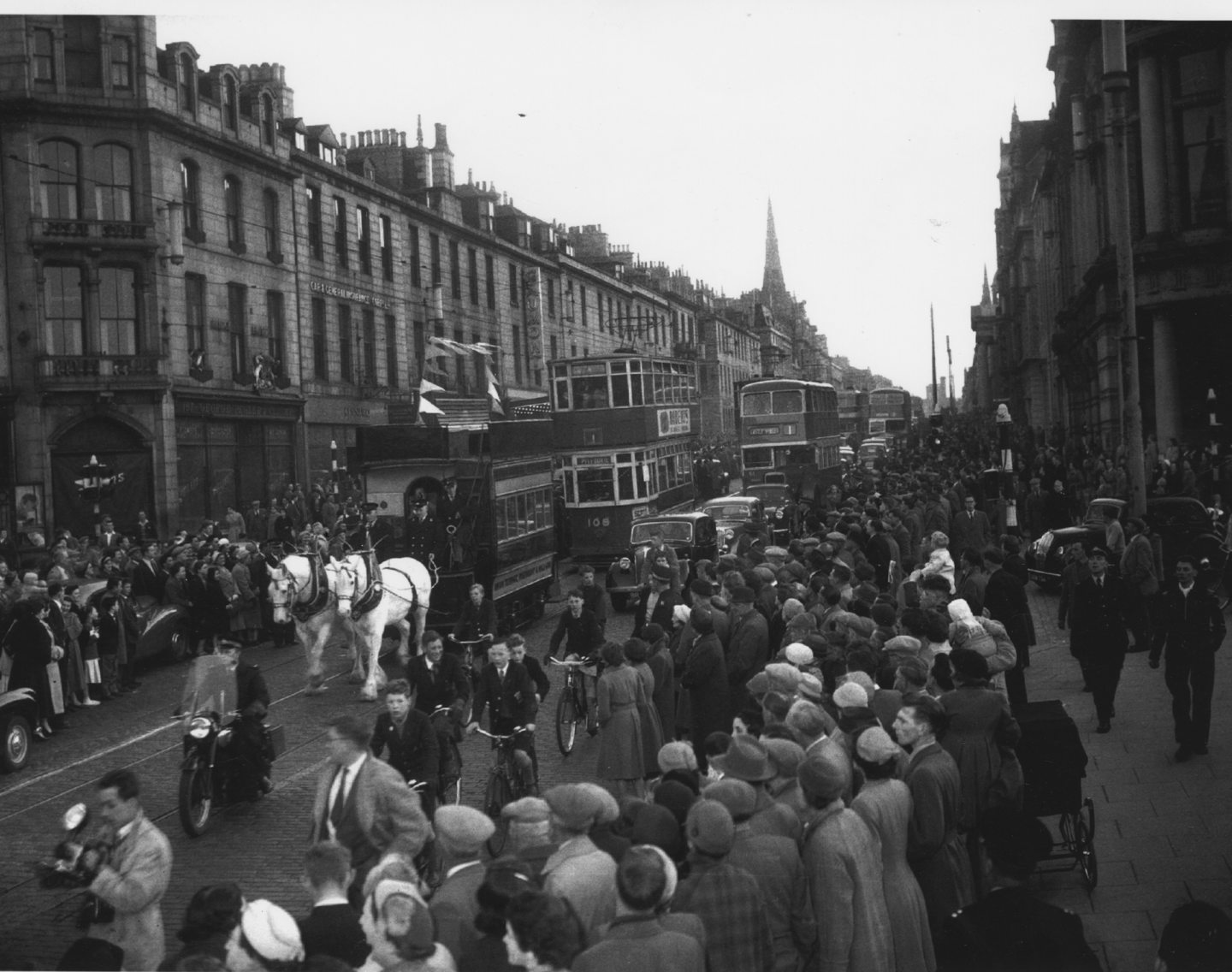
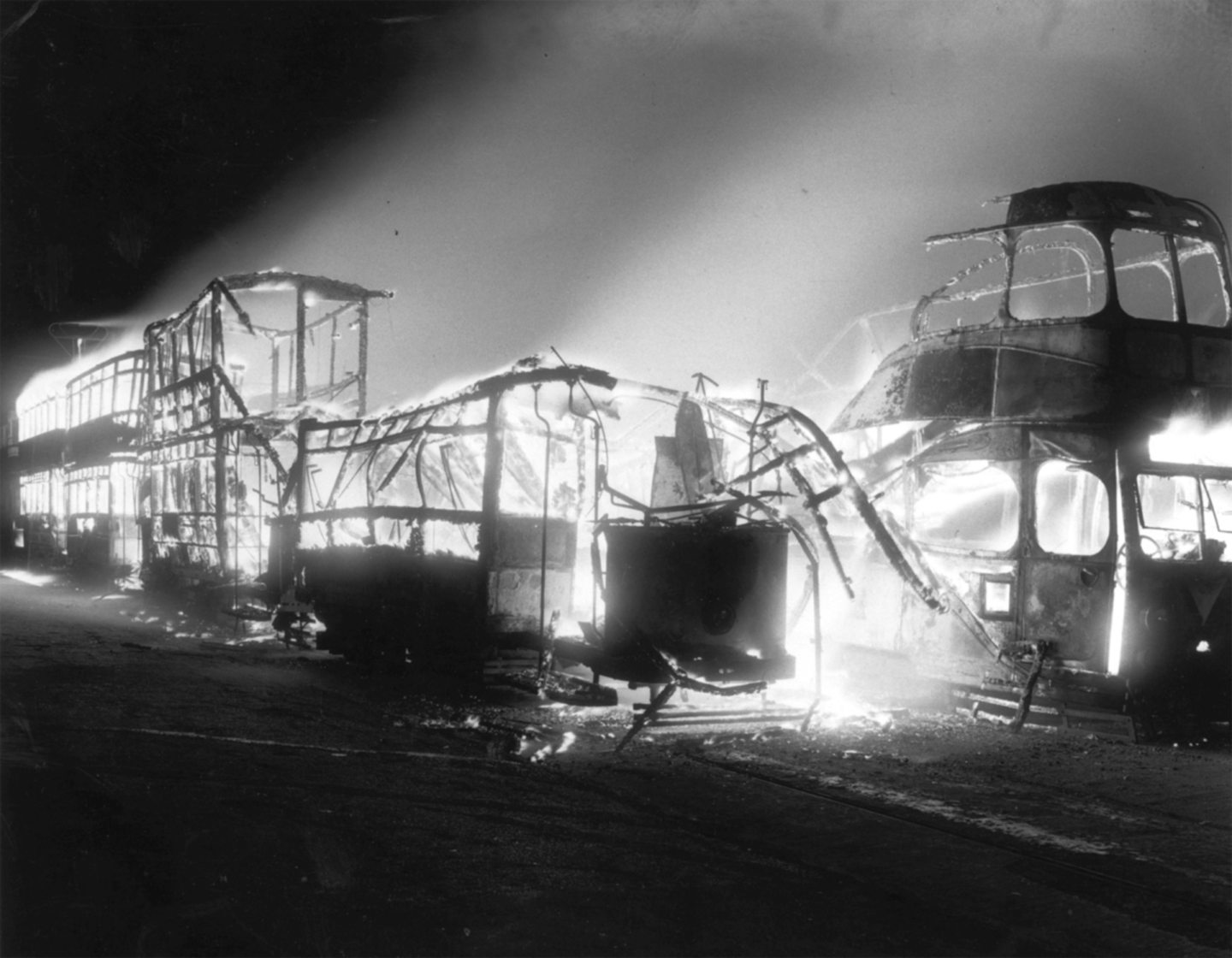
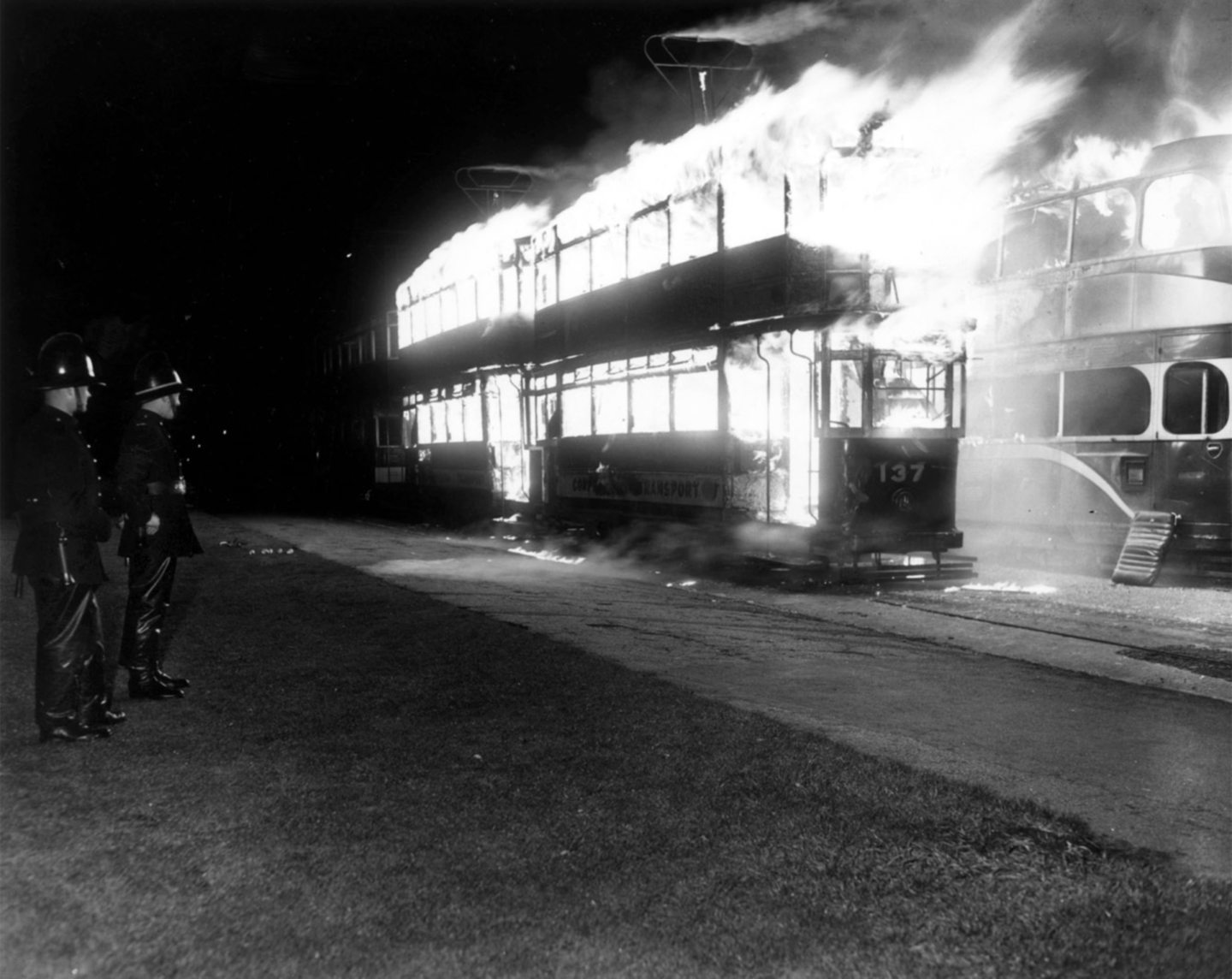
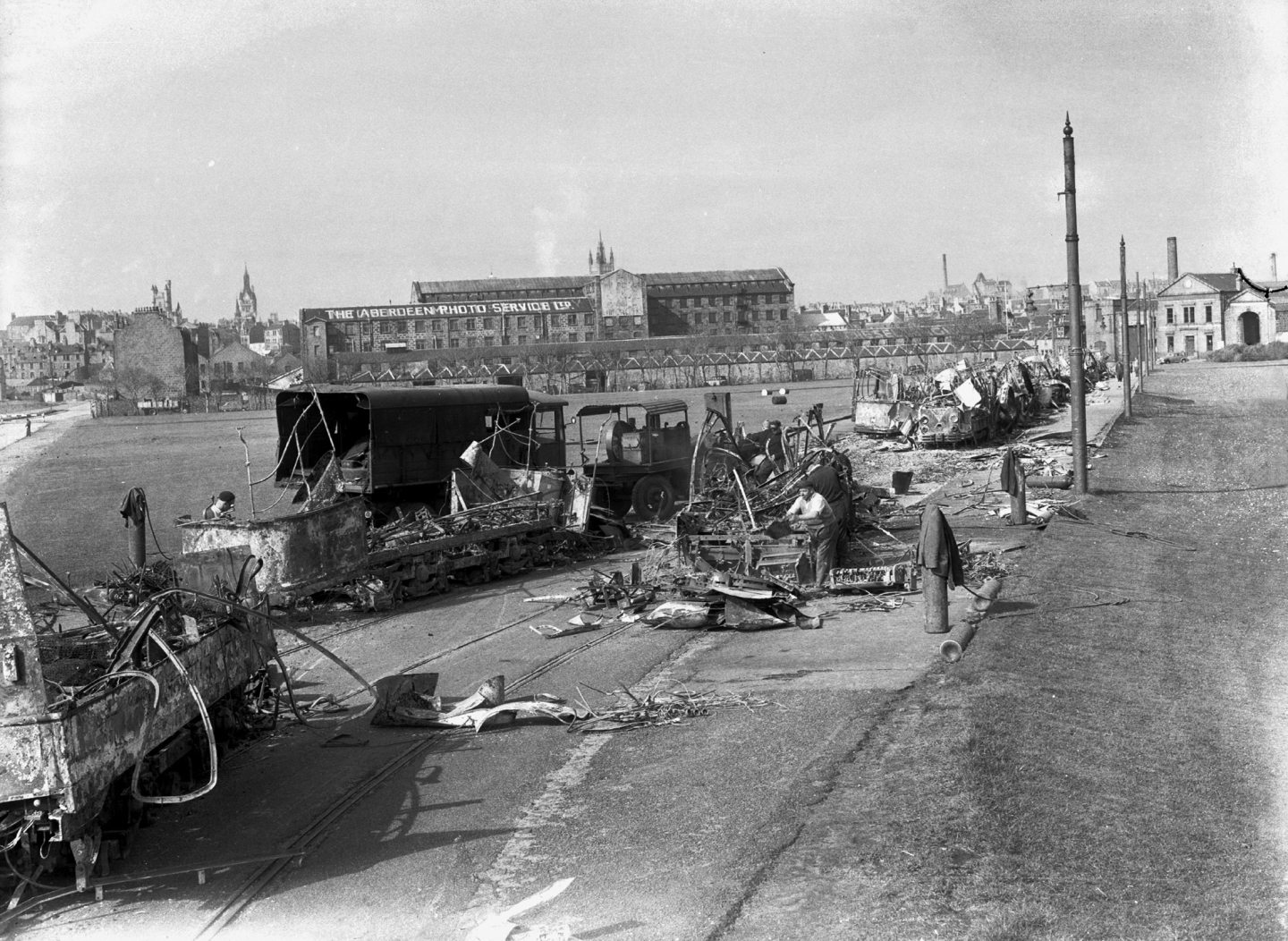
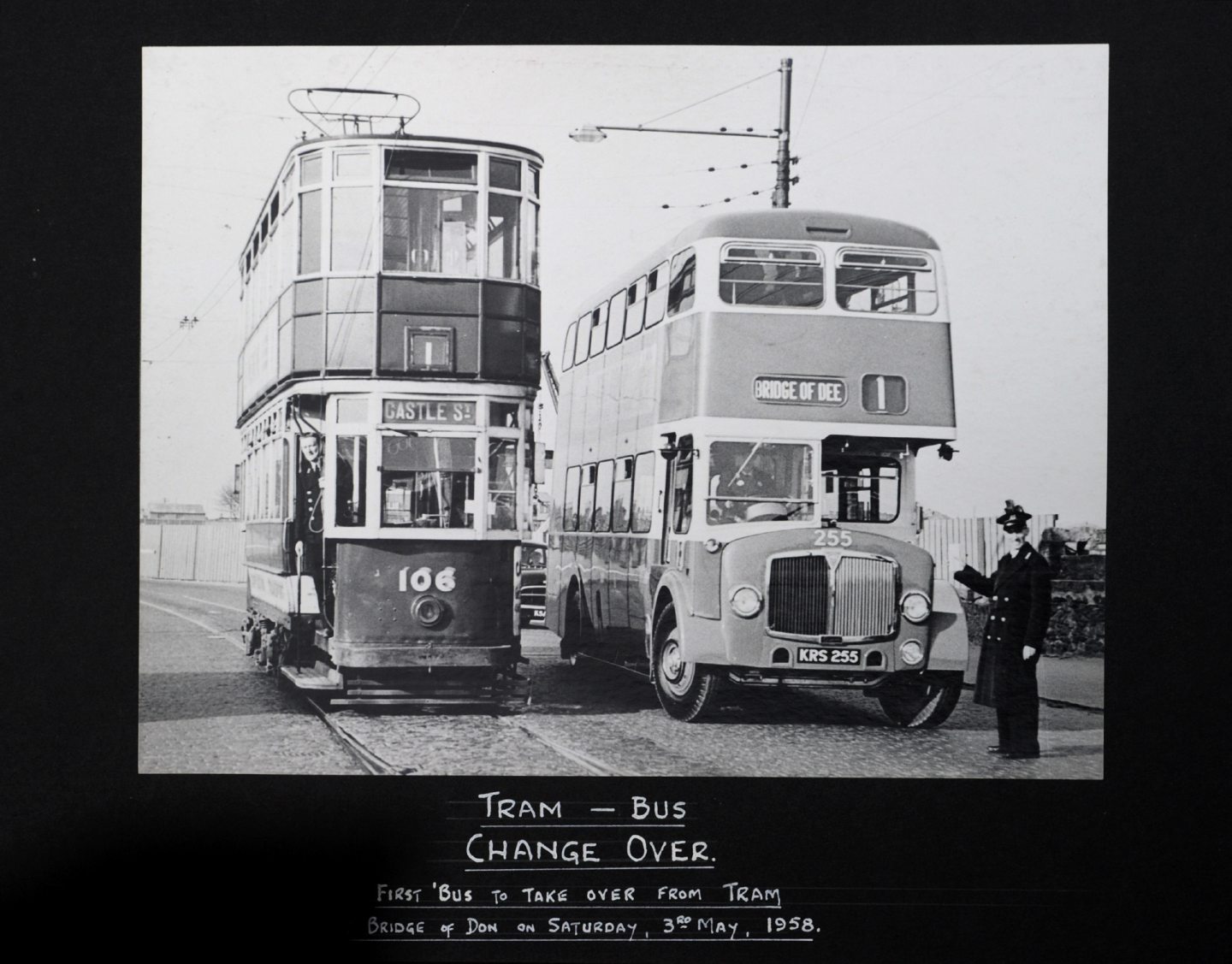
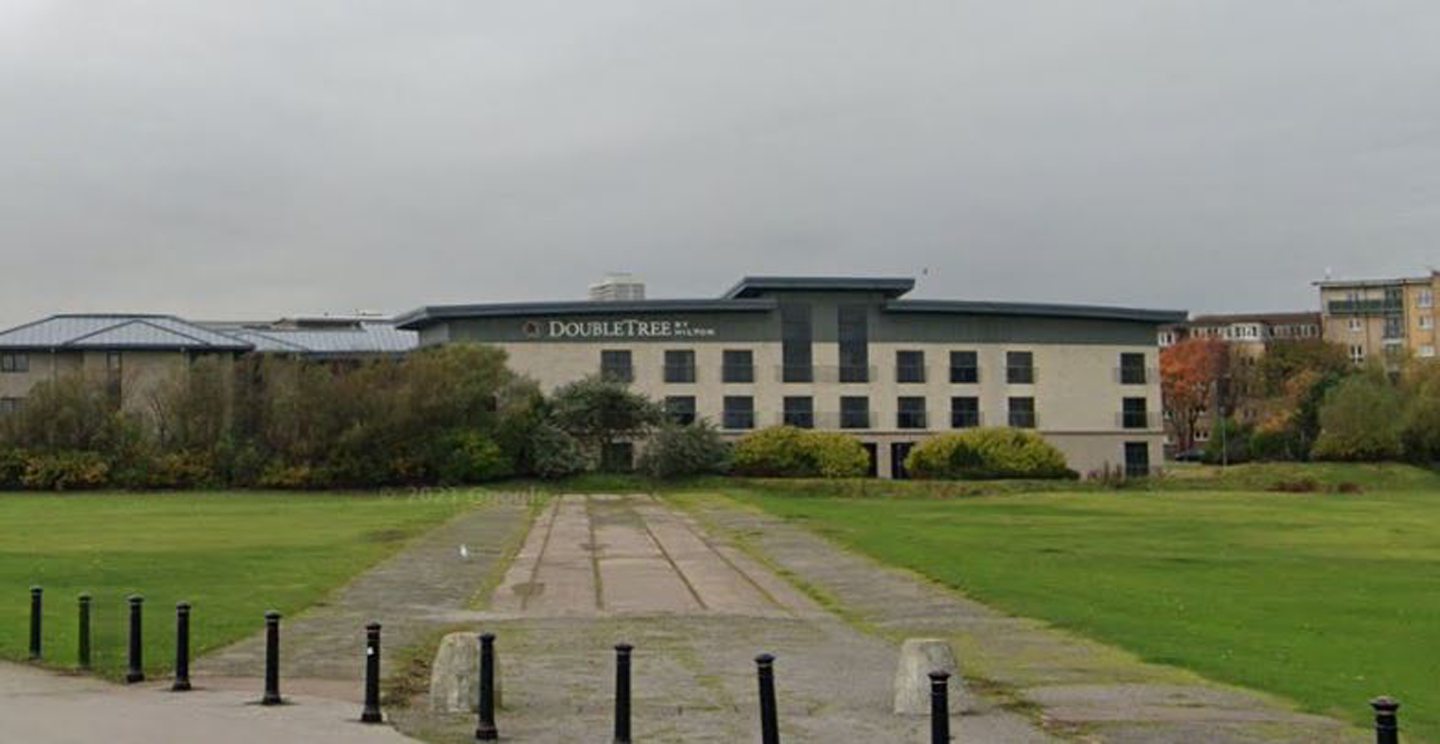
Conversation